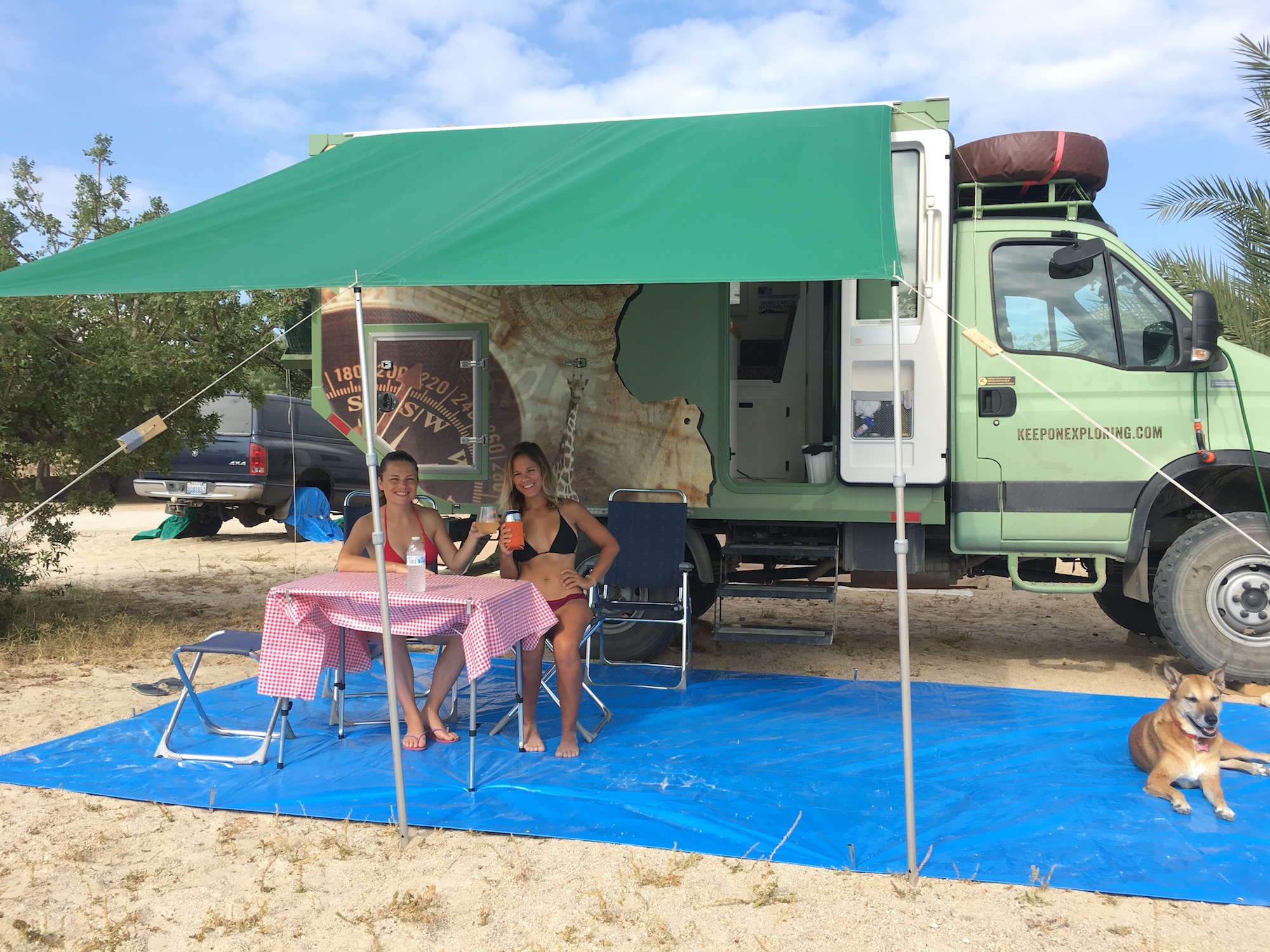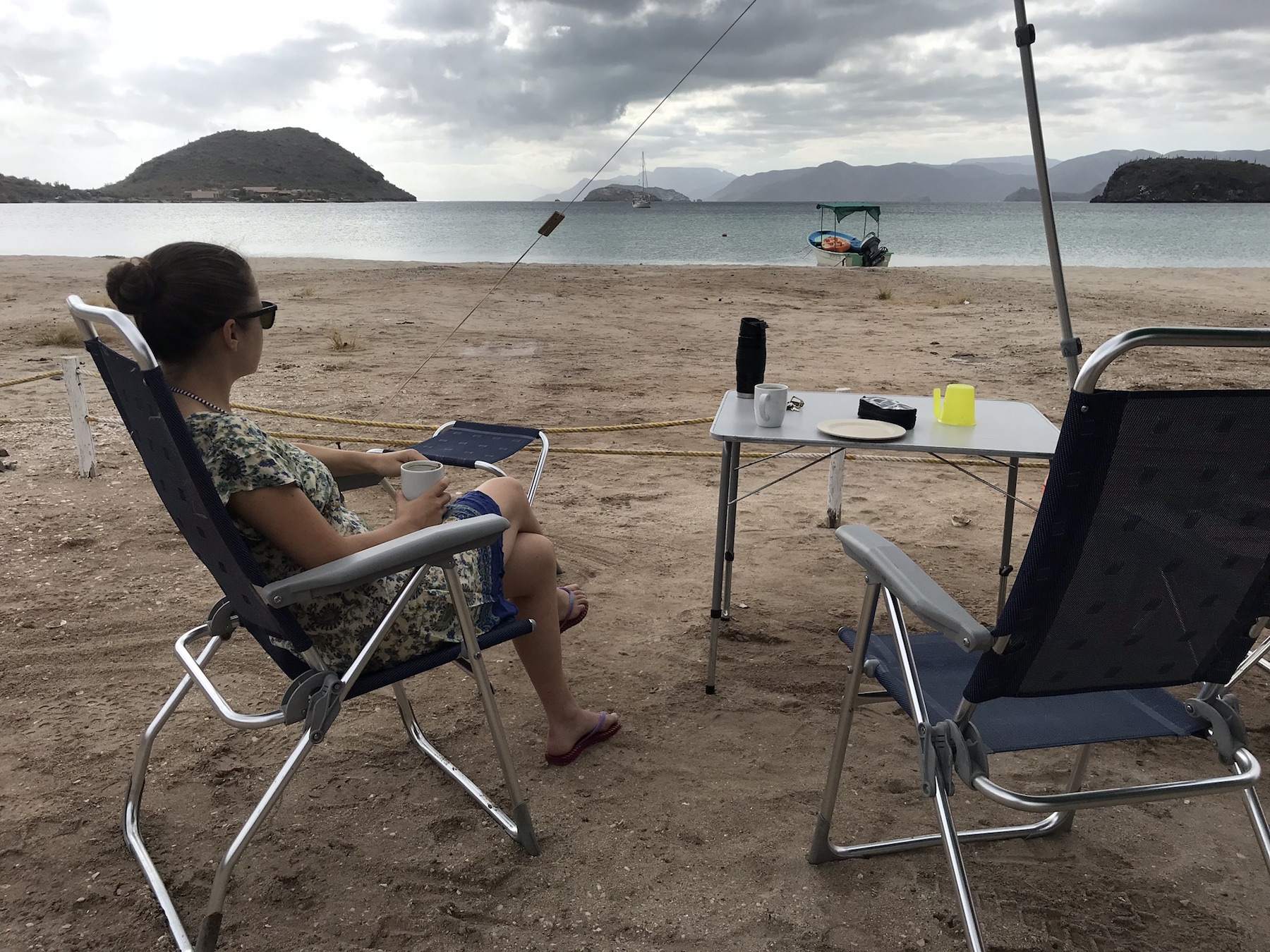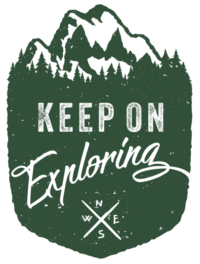If you are serious about taking a sabbatical year overlanding, just dreaming to travel around the world is not enough. Planning and preparation are integral parts of the process. For a gap year overlanding the Americas, as an example, one needs at least 6 months of planning, although 1 or even 2 years could be required if you are doing it whilst having other commitments. Here in this section we outline a couple tips and tricks which may help you when planning your sabbatical.
Financing your adventure
First and foremost, you should plan how to finance your sabbatical. If you are a freelance, and can work online or on the road perhaps you can make some money on the go and pay for your travel expenses. You will have to plan well to enjoy the right infrastructure when you need to work, but it can be done. This, however, was not our situation. We had to save money on our previous jobs to finance our travel expenses.
But how much money one needs to overland the Americas? It is a difficult question as it all depends on the vehicle choice, how fast you want to travel, how long, and how much comfort you need. People have different needs, so do not expect to find in our budgeting experience something that will fit your needs, although it can give you a good insight of how much it costs overland all the Pan-American Highway in an expedition truck for a full year as a couple.
We had set a budget of 50 Euros per day for both of us. This included everything. However, we soon realized that 50 Euros per day, average, was only enough for food, diesel, tolls, water, and camping fees. When we added shipping costs from Europe to America, over the Darien, and back to Europe, flights, insurances, fees, running maintenance, additional gear for the winter, tickets for touristic sites we neared 100 Euros per day. That of course excludes the depreciation of the vehicle, which we will discuss later.
As we planned to travel for one year only, if we wanted to make it from Halifax, Canada, to Prudhoe Bay, Alaska, and then all the way to Ushuaia, Argentina, we had to cover a lot of ground. That means we spent a lot of money on diesel and tolls over a relative short period of time, increasing our average expenditures. If you have more time and do not need to be every week on the road you can bring your average budget down. If you want to travel shorter distances, or if you want to travel by bicycle or motorcycle you can spend extraordinarily little. We have met cyclists on a 10 Euro budget per day having a great time. Hence, your spending budget depends entirely on your choices.
Vehicle of choice
We have seen people overlanding on foot, pushing a stroller, on bicycles, big and small motorcycles, regular cars, vans and even convertibles; SUVs, SUVs with messy interiors or popup tents, modified campervans, expedition trucks of all sizes, from Unimog’s and Iveco Daily’s to gigantic 10 ton MAN trucks. It all depends on what is more important to you. Is the off-road, all-terrain capability, staying within your budget, your standard of comfort, meeting with locals, staying at hostels, established campgrounds or into the wild? We can tell you what was important to us, and perhaps it will make sense to you. Please find our decision making process on Vehicle Choice section.
Our choice to purchase Brutus made sense to us back then. We would probably do everything again if we had to start all over today. But there is no one perfect vehicle that will fit everyone’s needs. Every vehicle has its advantages and disadvantages, which will fundamentally influence the way we travel.
The message is that you can do the Pan American Highway or any overlanding adventure in whatever way works for you. Take traveling by bicycle as an example: our first thought was about how exposed we would be to the risks of being hit by a car or mugged by delinquents. Then there are the hardships of tenting every day, enduring the weather, and so on. These are all true, but when we were traveling and met cyclists, we learned about all the upsides of choosing this type of adventure. Cyclists are more exposed, therefore they connect more with the people and the environment they come across. This helps to reduce the fear of an unknown place and situation, making cyclists very seasoned and fearless travelers. They are respected for what they do by most of the people and often helped when in trouble. We heard more cases of vehicle break-ins than of cyclists being mugged. Talking to cyclists we found out about www.warmshowers.org, a community of bicycle tourists and those who support them. It is the website to find places to set up a tent and have a warm shower. Nice way of getting around knowing likeminded people and learning about new cultures. And hey, spending very, very little.

Vehicle purchase, registration and resell
If you want to overland in a vehicle on long distances, the most economical and logical way is buying a vehicle on the beginning of the trip and selling it at the end of the adventure. This way your transportation costs and possibly part of your accommodation costs can become equal to the total cost of ownership of your vehicle, which is equal to depreciation plus running maintenance, taxes, fees, and fuel. If you chose the vehicle well and plan where you will purchase and sell it, you may lose extraordinarily little. In our case, we have lost only 4,5% on depreciation from buying in the Netherlands and selling it in Germany, 18 months and 70,000 km later. Having said that, we did incur the shipping costs from South America to Europe to enjoy the best market for our type of vehicle. In our case it was totally worth it, because the truck was well built, in good condition and we could sell it much better in Germany than in South America.
If you decide to buy a modified expedition truck in Europe please check how it is registered in the country of registry. Verify if the construction of the living cell has been homologated. Also, plan ahead where and how you will register it, including how the vehicle will fit in the local requirements for vehicle registration, road tax and insurance costs. Don’t forget to factor in the emission tax. In our case we have registered it in Romania, as a truck, as insurance and registration were low when compared with other European countries. And although some people deregister their vehicles, so they do not to pay road tax on their home countries whilst overlanding, we kept our truck registered in Romania for the duration of our trip. When we sold it in Germany, we had to homologate it as an expedition truck so the new owners could register it on their name.
If you are considering purchasing a vehicle in USA or Canada, where prices are good, to resell it in South America, make sure you research all it takes to register the vehicle, cross borders and transfer the vehicle to someone else at the end of your trip. Most South American countries do not allow the importation of used second-hand vehicles, with a few exceptions which vary from country to country. As you cannot register a used vehicle in South America, it is unlikely you will be able to resell it to a local. That reduces resell value as the market becomes limited to fellow overlanders. There are plenty of forums online and on Facebook about it, with vehicles being offered at reasonable prices.
Vehicle insurance
Most countries condition vehicle registration and temporary importation to the existence of a third-party liability insurance contracted by the owner with an insurer recognized in the country of registry or in the country you are applying for the temporary importation.
For Romania - and Europe for that matter, we have contracted a one-year mandatory third-party liability insurance when we registered Brutus. As our first stop was in Canada, before shipping Brutus from Belgium we made arrangements to procure a 6 months comprehensive motorhome liability insurance with extended coverage for Canada and USA. The insurance was arranged via Seabridge (seabridge-tours.de) with Thum Insurance (thuminsurance.com) and it served our purposes. Thum policy covered Mexico as well, however, by the time we got into Mexico our policy was running out, and we figured we could find cheaper insurance for Mexico alone at Baja Bound (bajaboound.com). They quoted with several insurers, and we chose the one which served most our needs. All was done online with credit card. From Belize onwards we started to procure insurances at the border, which worked well for us.
Driving license
Do not forget that you will have to obtain the driving license of the vehicle you want to drive. It sounds obvious, but it can be very onerous and time consuming to go through the process of obtaining a type C driving license. Have it in mind when choosing that big MAN truck. JP got his heavy vehicle license in Dubai on a three-axle articulated Volvo. As in the United Arab Emirates heavy vehicle licenses are only granted to truck drivers and mechanics, JP had to ask for a special police permission to apply for a heavy vehicle license. It was a long process, but he finally got his type C driving license.
Ioana underwent the same process, but in Romania. She got her license after many classes and tests and got her C1 on the last week before departing on our expedition. Pfeew! For our Iveco Daily 4X4 we needed a C1 category driving license. JP got a C because in Dubai there is no C1.
Check as well if you need to apply for an International Driving License for your regular driving license to be recognized abroad. Ioana applied in Romania for an International Driving License at a cost of 300 Euros, valid for 1 year. No one ever asked it for it while we were traveling. We leave it up to you to decide if it is worth it or not.
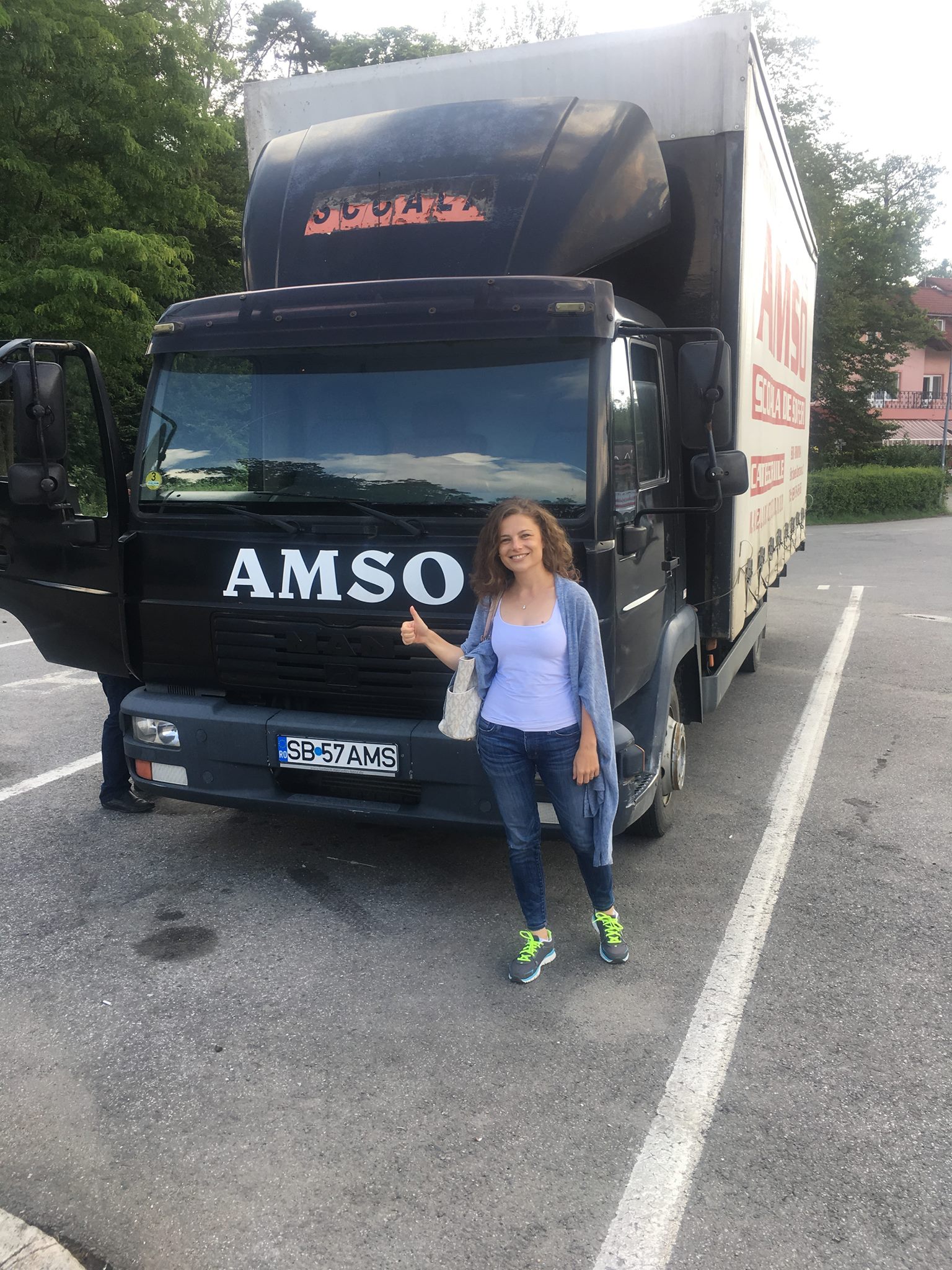
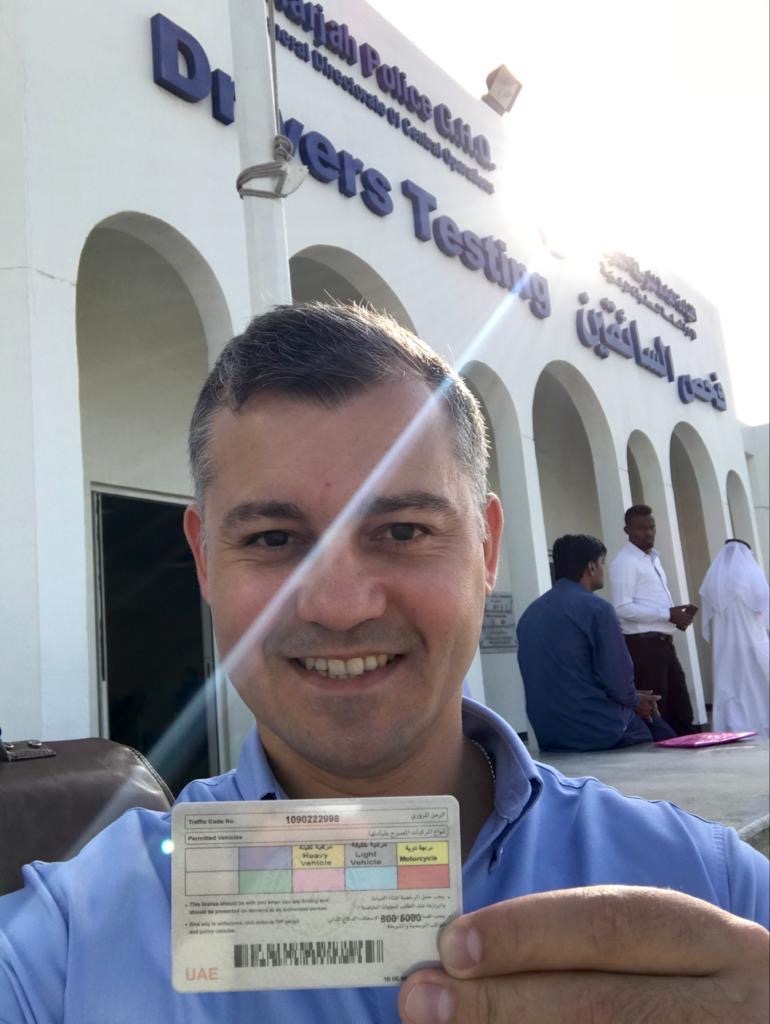
Maintenance strategy and vehicle critical spare parts list
It is important to have the right spares for servicing your vehicle as recommended by the manufacturer, as well as to respond to mechanical eventualities you may come on the way. Of course, because it would be expensive and require a lot of space, to carry spares for every eventuality is not possible.
This is how we did it:
After purchasing Brutus, our Iveco 4x4 55S18W in the Netherlands, the first thing we did was to drive to Romania where we would register on our name. After that, to be sure the truck would be in the best possible condition at the start of our journey, we drove to Bucharest and checked into the workshop of Iveco, at Iveco Truck Services (ivecotruckservices.ro). The workshop is not related to a dealer, as it is owned by CNH Industrial to service all their brands, including Iveco and Magirus in Romania. We received first class service and exchanged all fluids and consumable parts to ensure the truck was top notch. After that, together with Mr. Florin Neaga, the workshop manager, we worked out all the spares and tools which would be required on the following 3 services, or 90k km. That included oil, diesel filters and brake pads. We also printed the checklists with all items to be checked and the spares to be replaced when performing the next three services. Besides that, we have researched on Marcus Tuck website (tuckstruck.net) about issues he had faced with his own Iveco 55S18W. With that in hand, we have asked Florin to check on CNH records for the most critical spares they have been changing on 55S18Ws. Based on that we added a few more items to carry with us, including and not limited to a few fuses, solenoids, and injectors. In summary, we departed with all the original parts we needed for the next 3 services as recommended by Iveco plus a few more other items just in case.
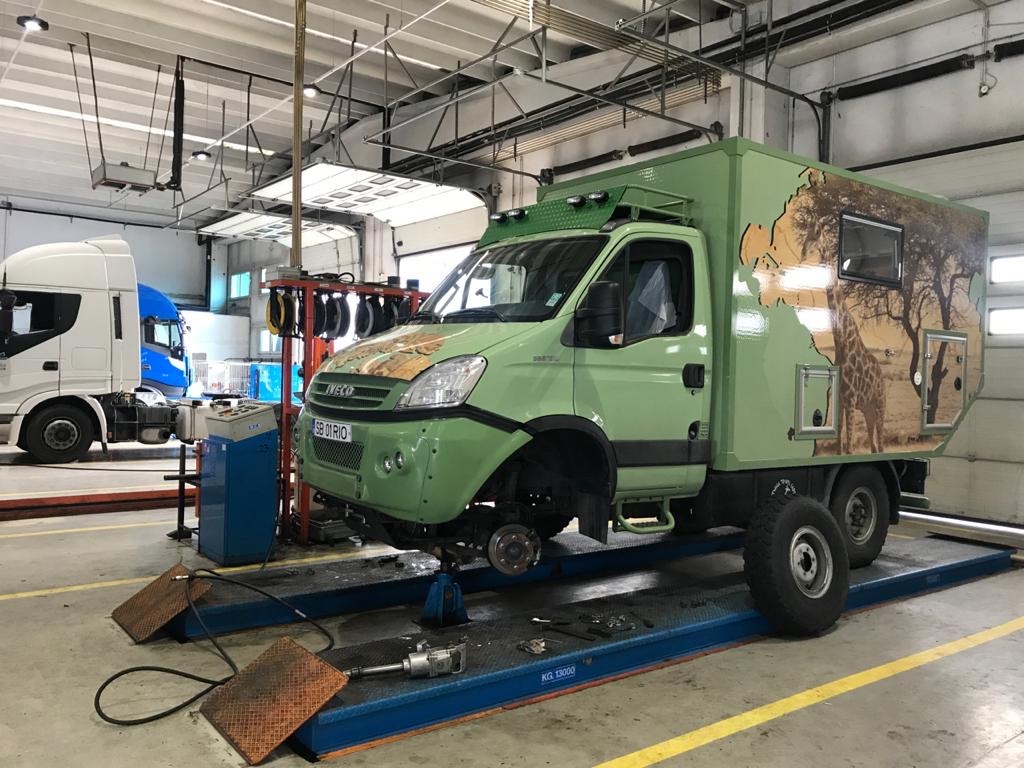
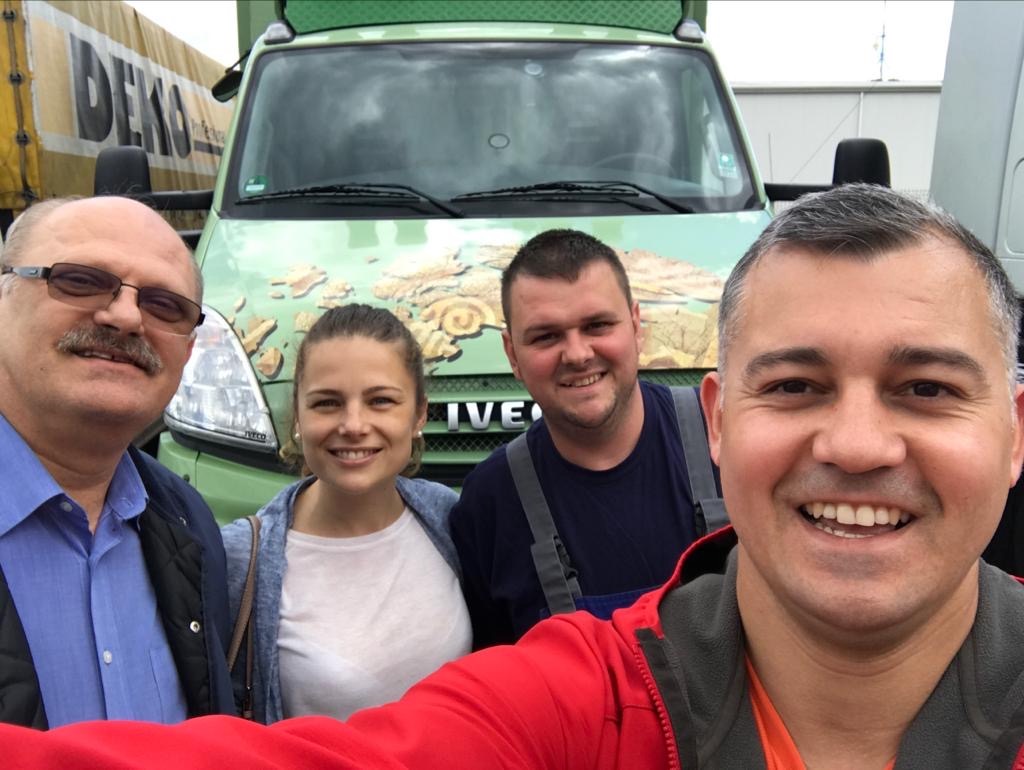
Bicycles
We were lucky to find a smart setting with Brutus with its two compact Dahon foldable bikes strategically organized in a small space at the garage of our truck. If you have enough space in your vehicle, bicycles can be very handy to explore the surroundings of where you parked the vehicle for the night. They are useful to run all sort of errands, to go for groceries, out to restaurants, or to exercise while discovering the metropolitan area of cities. Having the bicycles allowed us to keep on exploring while our vehicle was kept safely parked. They proved to be an amazing tool to exercise and discover the neighborhoods of our camping spots in Quebec, Ottawa, Vancouver and many other cities.
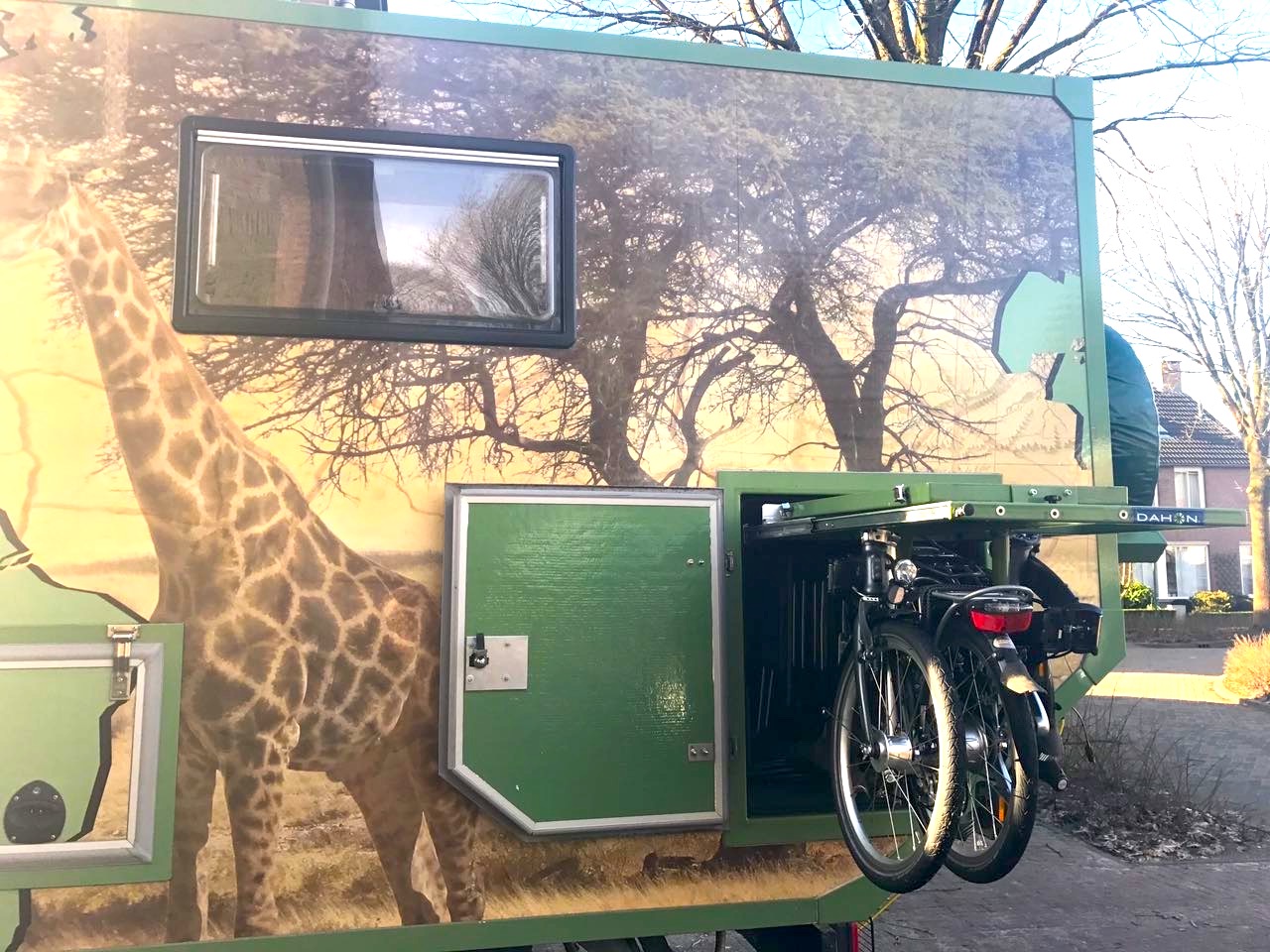
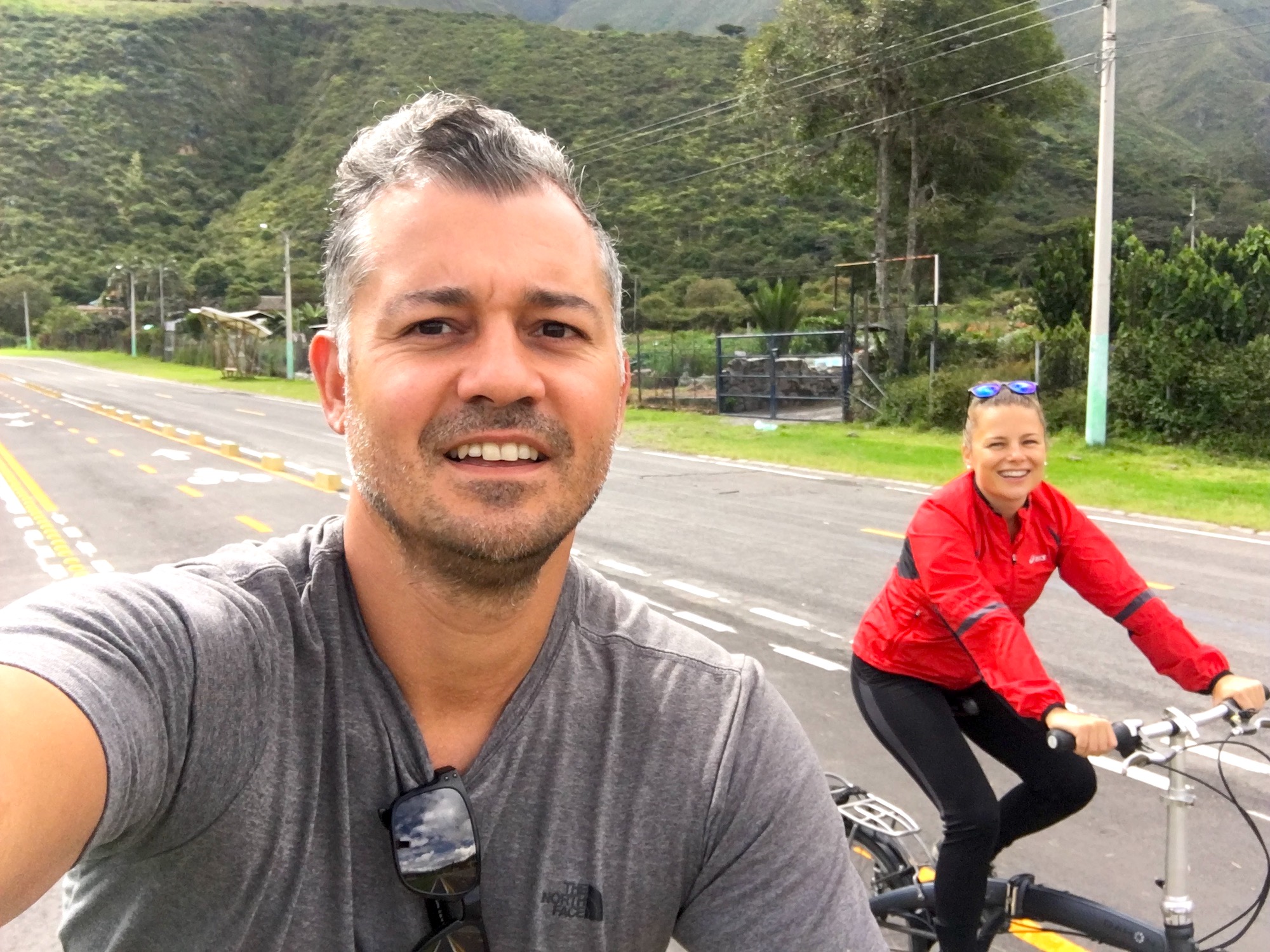
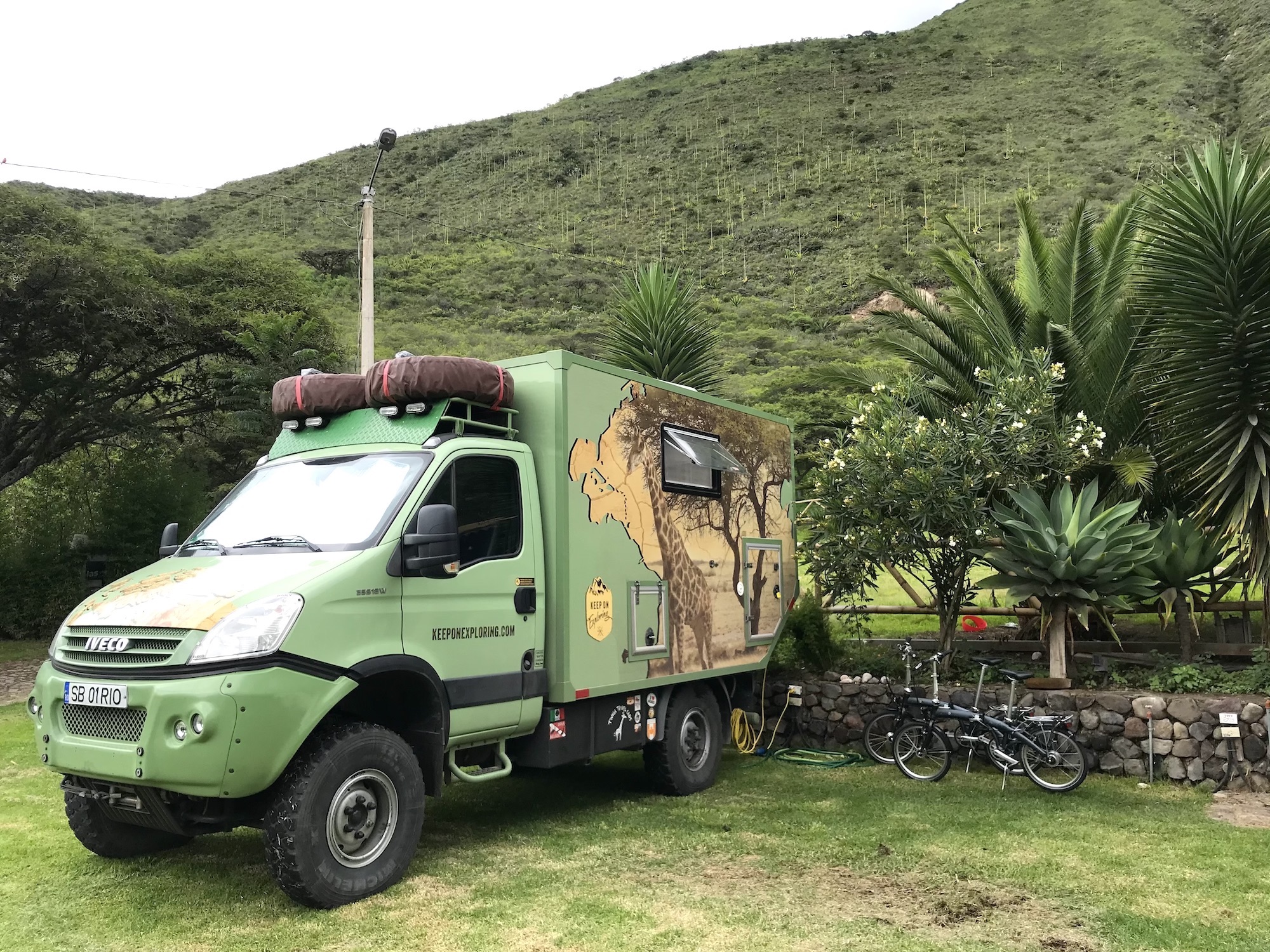
Passports and other important documents
More than carrying passports with enough validity and plenty of empty pages, it is very important to carry with you the standard documents you will need in case you have to apply for a new passport abroad. This way you do not need to return to your home country neither to have someone to mail documents to you. Also, have in mind that applying for a passport abroad can take a while, so plan accordingly. Lastly, plan well how to keep important documents safe. Having a safe box hidden and bolted to the chassis of our truck while we carried certified copies was a strategy that worked for us.
Visa requirements
Check ahead the types of visas you need for each country you plan to visit, what you need to prepare and how long it takes to process them. If you need to obtain the visas in your country of residence, do it before departing, for obvious reasons. If it can be done on the spot at the border of the respective country make sure you carry all necessary documents with you. In our case (Romanian and Brazilian passports) we only needed to prepare ahead for USA. For all other countries we were either exempt or could obtain on the arrival: Canada, Mexico, Belize, Guatemala, El Salvador, Honduras Nicaragua, Costa Rica, Panama, Colombia, Ecuador, Peru, Bolivia, Argentina, Chile and Brazil.
Health and travel insurance
Before departing we contracted a True Traveller (truetraveller.com) comprehensive yearly policy covering all the countries we would visit on Pan-American adventure. What is nice about this policy is that it is customizable according to the type of adventure you want to experience, and it has additional cover for extreme sports, etc. We cannot recommend it because we did not use it, but we remember being the best option at the time we contracted the insurance in April 2017.
Documents translations and copies
Make sure you carry all the important documents on the right language as it may be required. After identifying which documents we would carry with us, we made certified copies and plasticized a few documents to use every day. Vehicle title, ID, passports and driving licenses were all plasticized, and we generally handed these when asked by police officers, particularly in Central and South America. It worked well. We also carried with us simple copies of these documents which we were often required at the border for visas and the temporary importation (TIP) processing. Copy centers can be found often at the respective borders. Always check in advance all the entry requirements needed of each border and what do you need to prepare ahead.
TIP (Temporary Importation Permit)
To use your vehicle inside a foreign country you must go through the process of obtaining a Temporary Importation Permit (TIP) with the customs authority of the foreign country you want to enter with your vehicle. The TIP can be processed at border, and each country has its own regulations to issue a TIP. The usual documents required are: title of the vehicle and copy, passport of owner and copy, vehicle insurance (which generally can be bought at the border) and copy, proof of payment of the TIP fee, which vary from country to country. It is important to know that the TIP has to be cancelled when exiting the country at the border.
Vehicle shipping overseas
If we wanted to complete the whole Pan-American Highway on a return trip from Europe there would be three shipments to make:
First, to ship Brutus from Europe (Antwerp, Belgium) to Canada (Halifax) to get to Prudhoe Bay, Alaska and start our Pan-American Highway Adventure. The second was in Panama, half of the way through our adventure, to cross the Darien Gap on our way to Colombia. The third was after completing the Pan-American Highway, when we shipped Brutus back to Antwerp, Belgium from Montevideo, Uruguay. Below you outline some info for your reference:
- Antwerp, Belgium - Halifax, Canada: Through Sea Bridge (seabridge-tours.de) we proceeded with booking and shipping Brutus in June 2017. We paid at the time about 2,600 Euros for a two weeks one way trip over the Atlantic on RoRo vessel. The process was straight forward, JP drove to Antwerp from Romania, prepared the shipping documents, and left the truck at the terminal. Two weeks later we picked it up in Halifax in perfect order. The process was easy and without incidents.
- Colon, Panama - Santa Marta, Colombia: Since there are no roads or ferries between Panama and Colombia, the only way to cross the Darien Gap is to ship the vehicle on a RoRo ship through the Caribbean sea. It is very expensive for what it is, especially if you consider that the distance between Colon and Santa Marta is just about 500km. All about our experience crossing the Darien can be read here.
- Montevideo, Uruguay - Antwerp, Belgium: Through Sea Bridge again, we paid about 2000 Euros and it was a fairly easy process. After paying the shipping fees we prepared a file with documents, performed the truck inspection and left the vehicle with the agent. It was a fast and straightforward process without incidents.
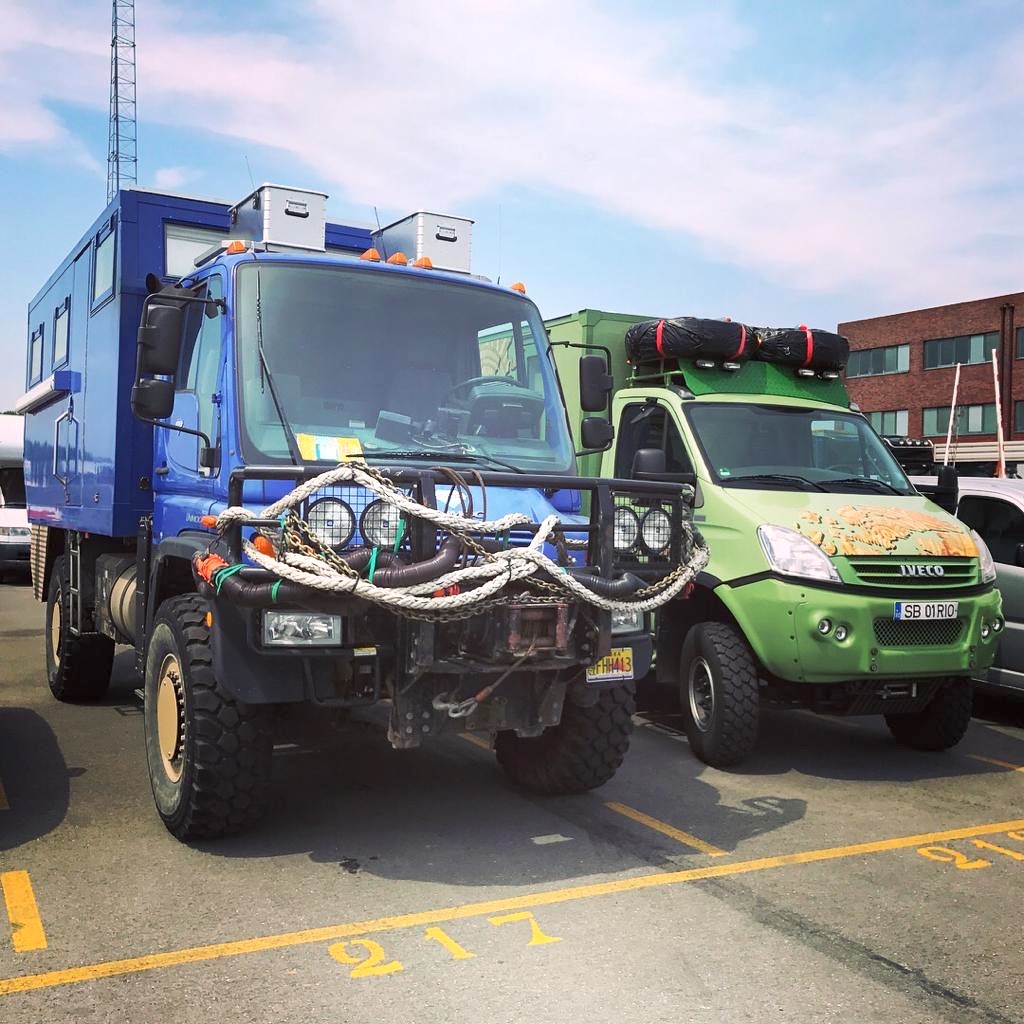
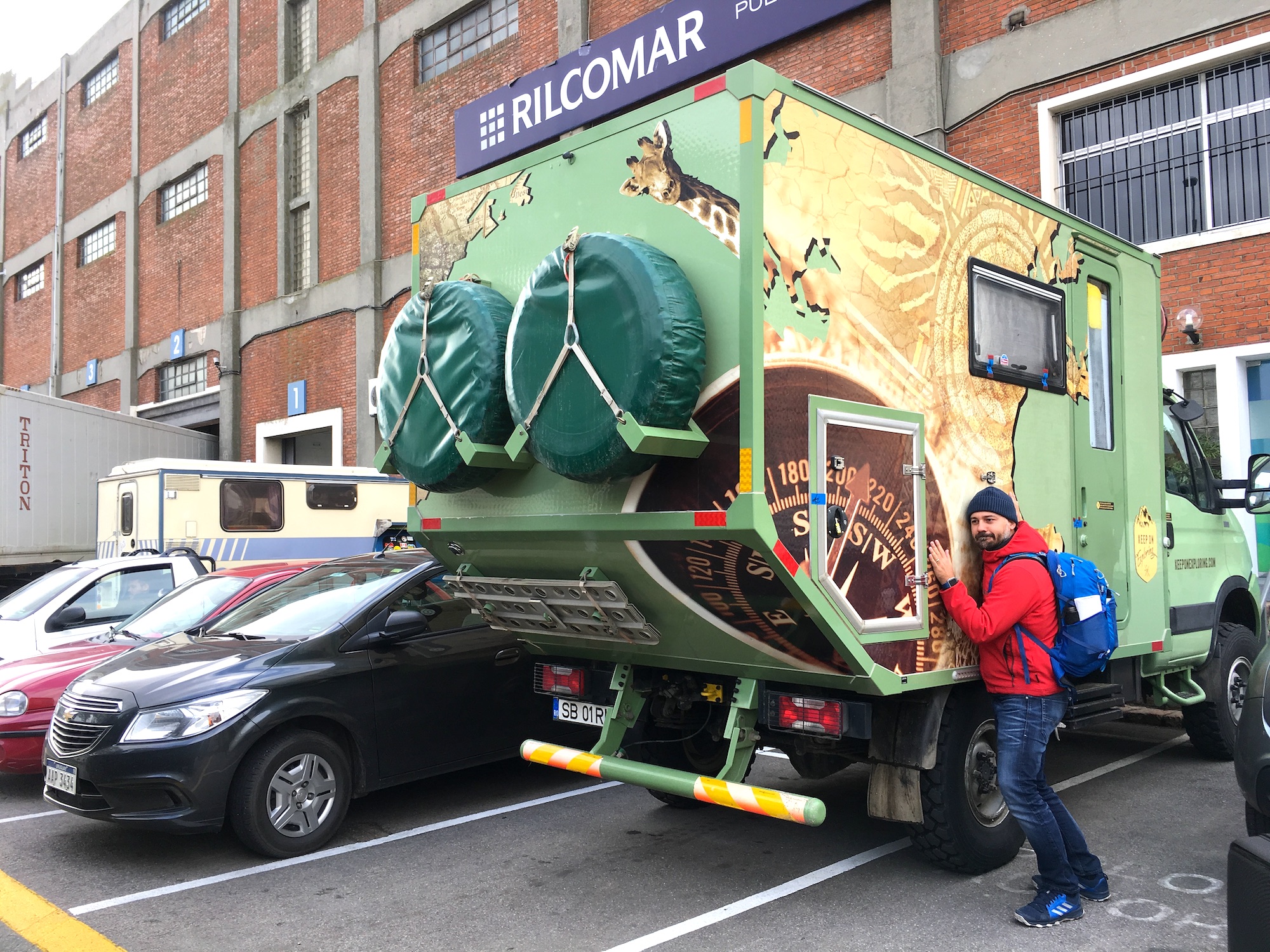
Apps of interest when overlanding
Maps and navigation: we generally used two apps to plan ahead our routes and to make sure we were on track, even when we had no mobile signal and Internet:
- Google Maps (maps.google.com), downloading the maps in advance it worked well;
- Maps.me (maps.me), open source, also downloading the database in advance worked very well. Neither option is perfect out in the wild, so we often would use both. Maps.me has a good database of trails as well, which was useful too when planning hikes.
Camping spots and useful road information:
- iOverlander (ioverlander.com) This app made by overlanders for overlanders is the biggest database of camping spots available today. It also caries important information about road conditions, border crossings, workshops, restaurants, attractions, and so on. It is the number one app when overlanding, also because it works offline.
Country reviews or travel blogs
We have used Lonely Planet (lonelyplanet.com) guides for almost every country, reading online in advance about the places we planned to visit. Today there are zillions of professional and personal travel blogs where one can get information. The most important is to have network connection and internet when you need.
Communications / sim card / internet
Don’t waste your time searching for one provider of internet for the whole journey. The cheapest and most effective way to have high speed internet in every country is to buy a prepaid sim card with a large data package as soon you enter the country. You need to identify which provider offers the best coverage and where the nearest shop is. Go there, job done. Insert the sim card on your phone and voila, hotspot to your wife/partner/friend and you have internet. Do not forget to configure your phone not to update apps automatically, or to download WhatsApp media automatically, or your internet package can go fast. Besides that, make use of WIFI as much as you can to download maps, movies, or when uploading pictures to your blog.
Satellite phone / emergency beacon
After some research we decided that we would need two satellite communication devices.
The first to trace our truck in case it got stollen. For that we chose Spot Trace (findmespot.com) which pinged the truck position at every two minutes and would send an email to selected recipients at every time the truck would move, stop, or once a day if the truck did not move for 24 hours. The Spot Trace served its purpose, was relatively cheap, and we would be glad to use it again for this purpose.
The second device, the Spot Gen3, we bought to take it with us when hiking if something serious would happen to us. The Gen3 is a one-way communication device, that you press a button in case of emergency, and wait. That is it, no way to explain what is wrong or to get a message back with instructions. Frankly, we would not buy it again. Today we find important to have a two-way communication system, even if only for texting. We heard now that Spot has launched the SpotX with two-way communication, probably hearing their costumers and responding to competitors like Garmin with their InReach line. In short, look further into Garmin InReach and compare with SpotX against your budget and needs.
Tablet / phablet with a bigger screen
For those rainy days, or at night after dinner, we liked to watch a movie from time to time. We subscribed to Netflix and took a phablet with us to use as a TV. To get a better sound we would connect to a Bluetooth wireless speaker and it worked well for us. In short, we do not recommend taking a tablet or a phablet with you if you are carrying a laptop which could be used for the same purpose.
Bluetooth wireless speaker
A Bluetooth wireless speaker which you can connect to your phone is a great way to make that Spotify subscription useful, bringing a great atmosphere to your camping experience. We had a small JBL we would carry with us everywhere. It was very handy.
Right clothes for the right season
Travel light with what you really need. If you are traveling on summertime, you will get away easily with couple of T-shirts, comfortable shorts, a swimming suit, flip flops, a pair of running shoes. But if you are going through colder areas you will need proper gear: waterproof shoes, rainy jacket, winter jacket, thermo trousers and blouses. We believe that fewer clothes of better quality that can be used every day are better than having many clothes which you rarely used and occupy valuable space in your vehicle. We would change our clothes every 3 days washing them at laundromats most of the times.
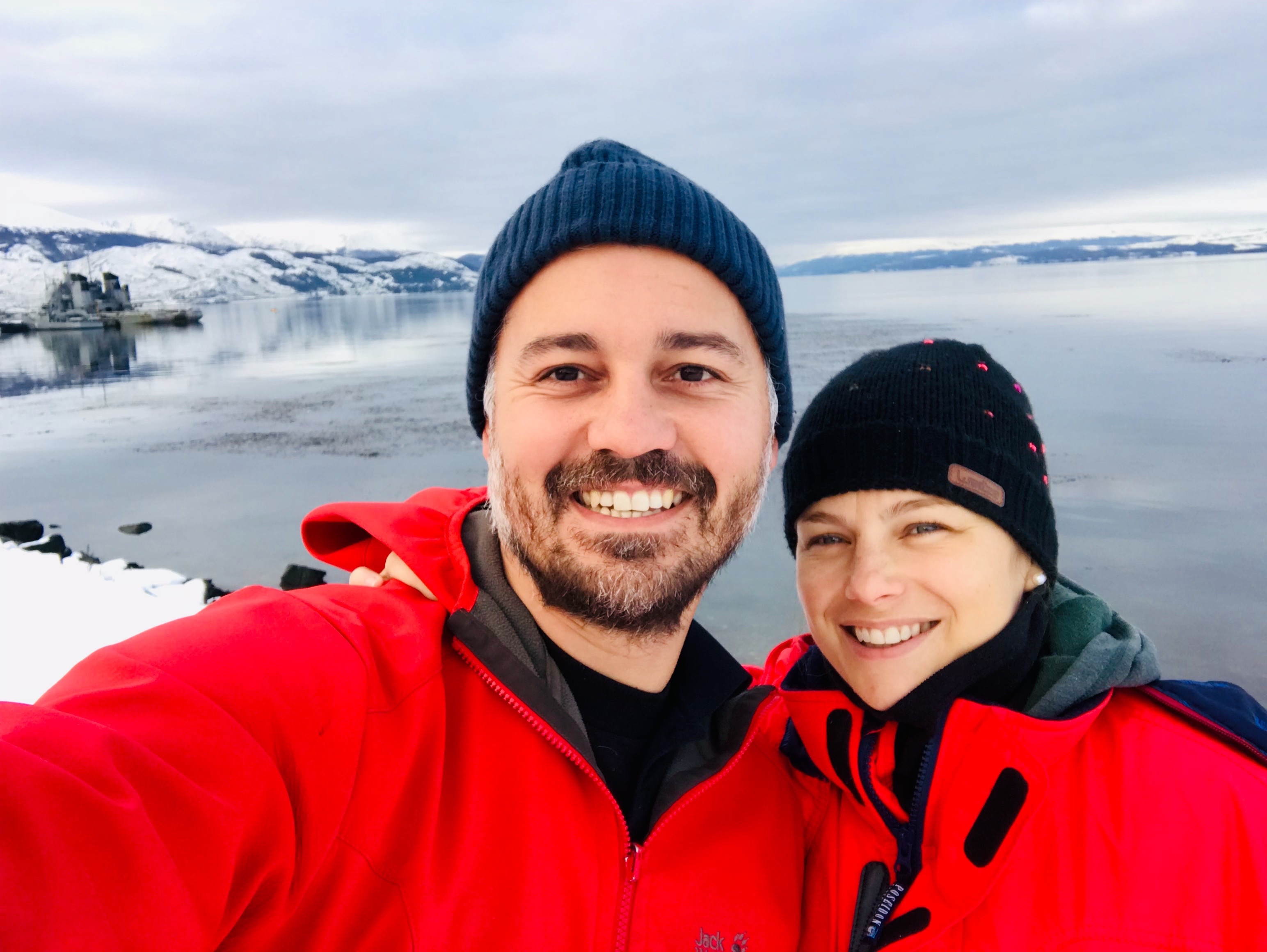
Shoes
For summertime there is nothing better than Havaianas flip-flops. Crocs may not be the sexyest, but are handy to get in and out of the vehicle fast, they are easy to wash and store. When it comes to shoes, it is worth to invest in waterproof Goratex hiking type shoes to protect you when is wet, the same apply to trail running shoes if you like running.
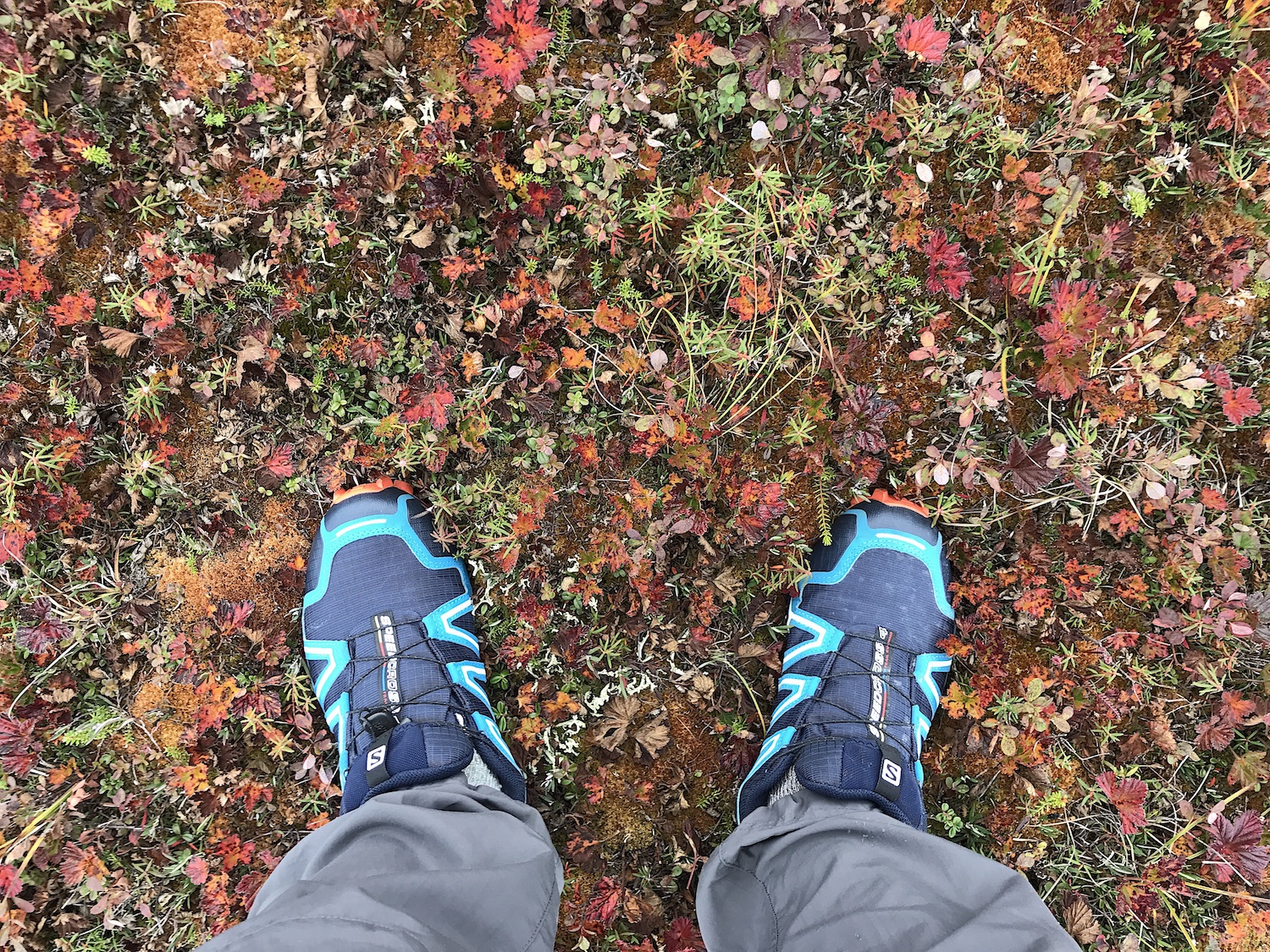
Yoga mat
If you like pilates or yoga, a mat is a great thing to carry with you wherever you are. Place your mat on the grass or on the beach and enjoy the sound of the nature while doing yoga or stretching your bones after long drives. A mat can also be handy when it is necessary to slide under the truck for some maintenance.
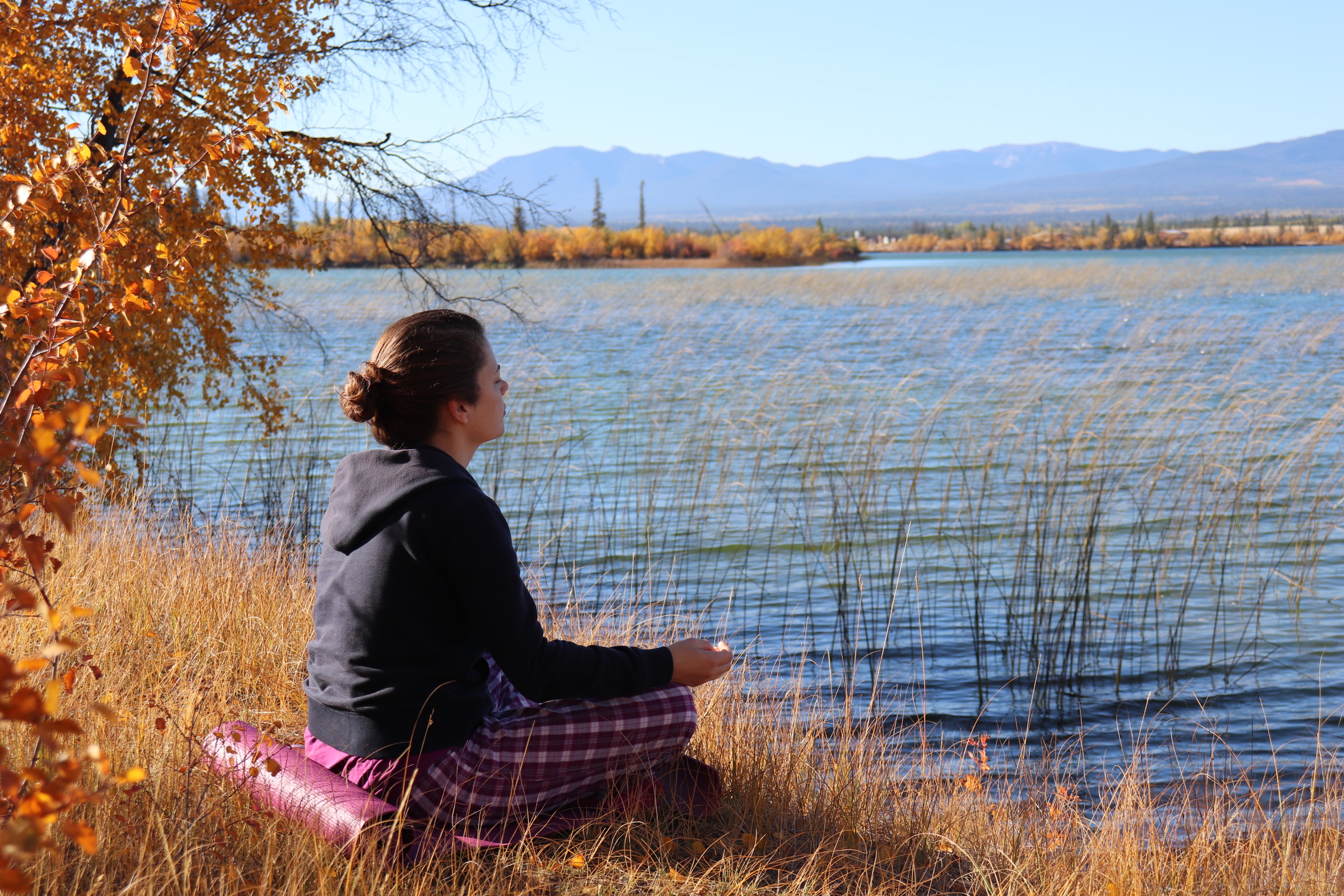
Kitchen, water, and cooking utensils
We would mostly cook inside Brutus in our built-in kitchen. We had a two-burner propane stove and a marine grade compressor fridge. Brutus was fitted with a 250l water tank and a triple water filtration system which included ultraviolet, so the water we drank and cooked was mostly clean. As we were two, all our pots, plates and utensils were organized for us +2, just in case we received guests. We had a simple Coleman toaster we used on top of our stove in the morning. We also had a grill for outside barbecue, which we rarely used. What we used more often when outside was a Coleman gasoline two burner stove which we placed in an outside cooking area we could attach to the outside of Brutus living cell.
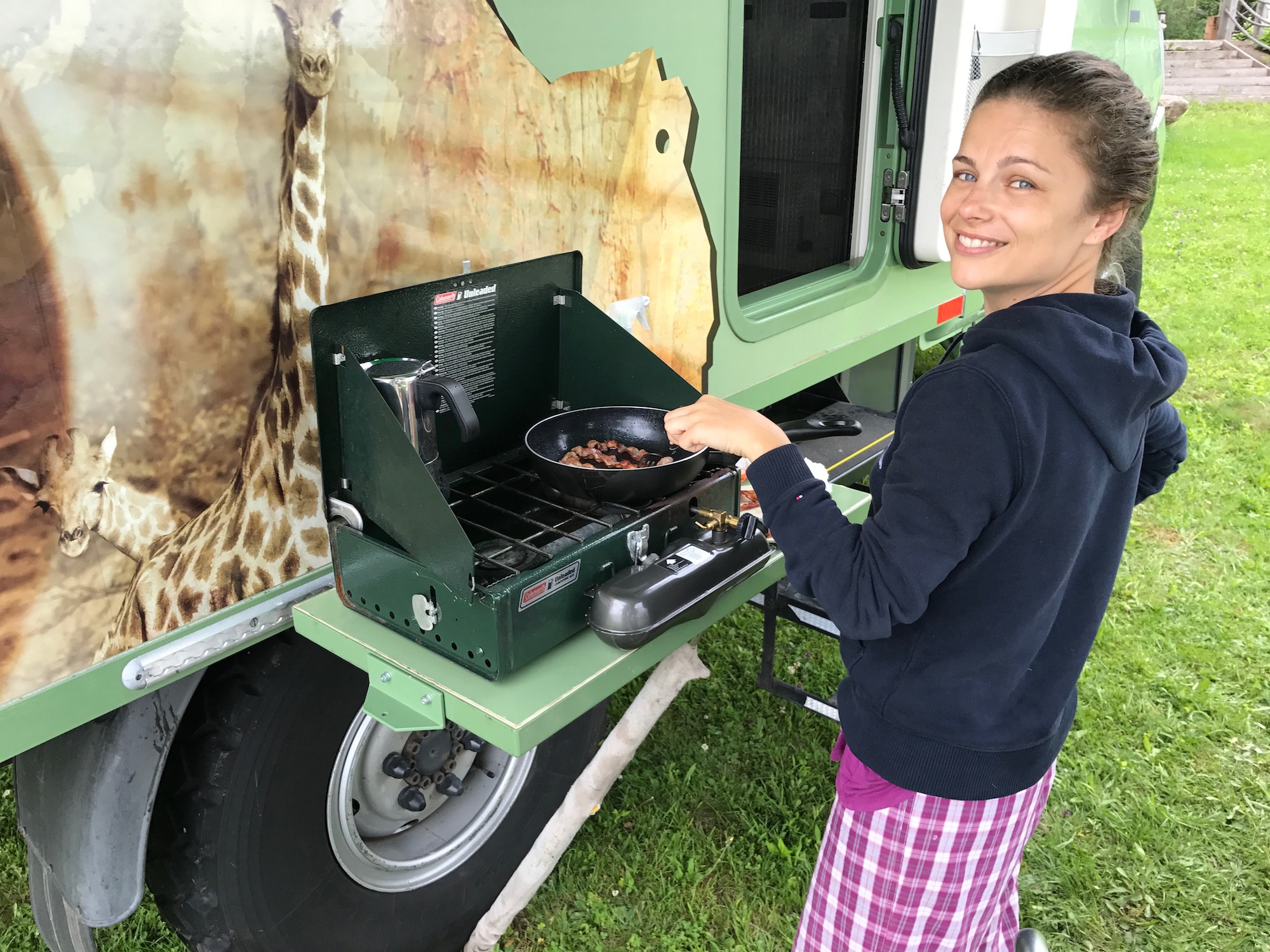
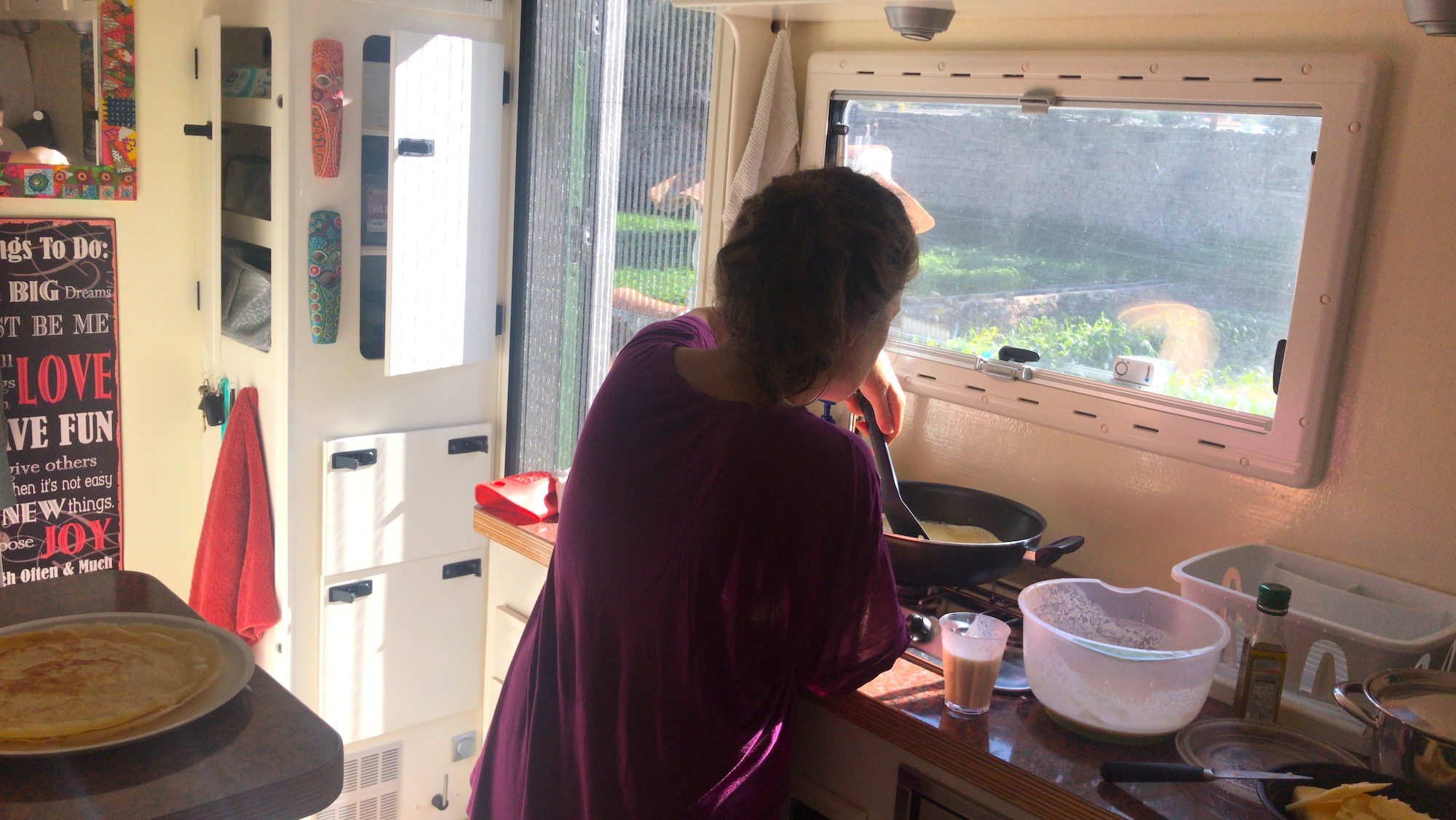
Awning
When camping in very sunny places it is useful to have an awning where you can set your tables and chairs under. We had an awning custom made for Brutus and we really enjoyed ours when camping for longer days. It improved our comfort, providing plenty of shade protection when we were in the nature.
Outside table/chairs
They are amazing when you want to enjoy the outside area of your vehicle and prepare your lunch or dinner while looking at your exquisite landscape and breathing the fresh air of the nature next to you. We had a couple chairs, a table and a bench we would use often.
